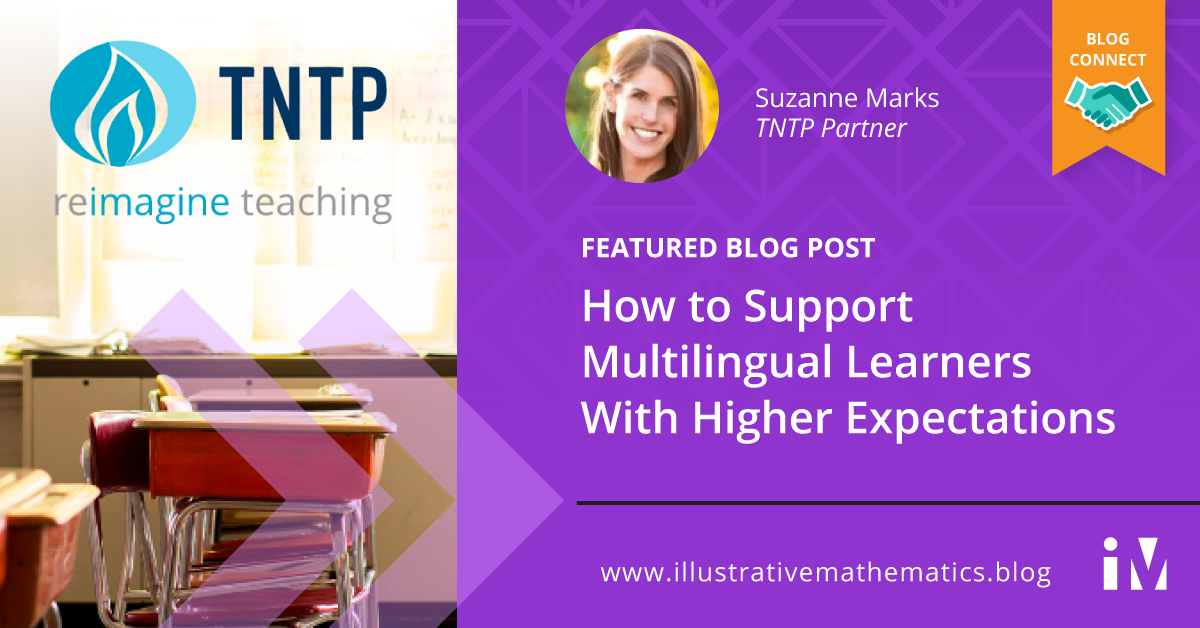This blog post was written by Suzanne Marks, Partner, TNTP and originally posted on the TNTP blog.
TNTP recently partnered with Stanford University’s Center for Understanding Language (UL) to develop strategies for ensuring Multilingual Learners (MLLs) receive access to challenging, grade-level learning. To access free resources to help school and system leaders accelerate MLL’s access to grade-level work in their own classrooms, download TNTP’s new resource, More Than Right Answers: Math Instruction for Multilingual Learners.
Multilingual learners (MLLs) are one of the fastest-growing student demographics. They’re also one of the least likely to receive consistent access to grade-level work— often because teachers assume the work is too challenging and offer a simplified version instead. TNTP’s research has found that these well-intentioned efforts to “meet students where they are” actually cause students to fall even farther behind academically. In the case of MLLs, it perpetuates an opportunity gap that the COVID-19 crisis has only widened.
Closing this gap and accelerating MLLs’ access to grade-level work requires not only giving educators the tools to support language access, but also helping them develop a belief that all MLLs can engage in challenging, grade-level learning and raising their expectations for what MLLs can accomplish.
In 2021, TNTP partnered with Stanford University’s Center for Understanding Language (UL) to do just that by piloting a professional learning experience for middle grades math teachers in three California school systems that serve high percentages of MLLs. Our goals were to provide dynamic, hands-on training in effective language instructional practices that allowed math teachers time to apply what they learned with students—and see firsthand what MLL students could accomplish as a result. It’s an approach modeled on TNTP’s successful Good to Great teacher development program, tailored to incorporate UL’s expertise with MLL instruction.
Our training focused on showing teachers how to provide language supports for students without reducing the cognitive demand of the task. That meant challenging the traditional language strategy in math, which consists mainly of calling out some vocabulary in class. Our training helped teachers incorporate language as a focus before, during, and after each lesson. This led to the inclusion of appropriately rigorous scaffolds, increased student discourse, and a focus on academic language which students had never before experienced.
The professional learning experience showed promising results. On surveys, 90 percent of participating teachers agreed or strongly agreed that their teaching improved as a result of the training. Classroom observations we conducted confirmed that feeling, with 83 percent of participating teachers showing growth on core instructional skills by the end of the training.
Just as importantly, many teachers came away from the training with higher expectations for what MLL students can achieve in the classroom. “With language support, so many more students are able to understand the problems and participate in class discussion,” said one 4th grade teacher. A 6th grade teacher shared that during the training, “I never told [students] that this was really hard…I did not just assume they can’t do it. If we keep that expectation high, even if it takes a long time, they can do it.”
